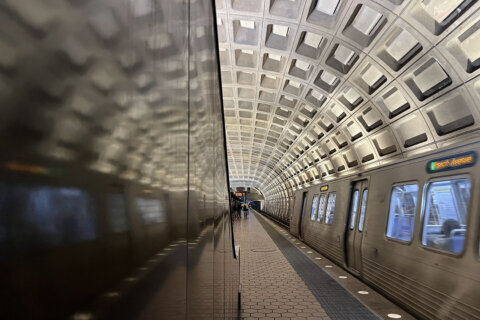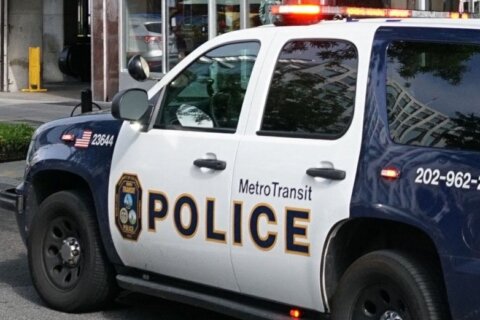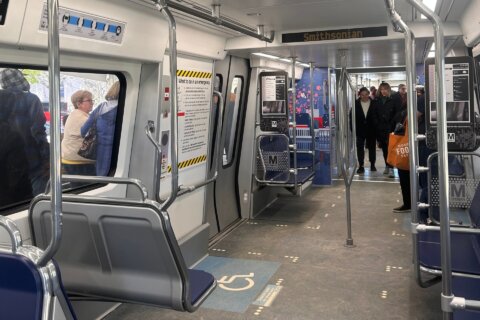Metro must fix inadequate, inconsistent or outdated track safety and maintenance policies that lead to some track workers essentially winging it and others skipping key maintenance or inspection procedures, the first-ever audit from the independent Washington Metrorail Safety Commission found.
Metro now has 45 days to come up with plans to address the 16 findings from the Audit of Track Maintenance and Training.
Among the issues, Metro has failed to do proper rail safety checks on dozens of hot days; there are conflicting or missing directions about safety-related speed restrictions and quality control; and there is no evidence proper lubrication refills are happening on curves, which would mean more wear and tear, more noise, more energy use and an increased derailment risk.
There is also no evidence most supervisors are doing required quality checks of repairs each month. Seventeen of 20 mainline track inspection quality control spreadsheets were either completely blank or fell short of the minimum four checks per month.
Metro cannot even say for sure whether it creates work orders to repair problems identified by track inspectors or a high-tech track inspection vehicle, and had no evidence of work orders for some other key maintenance work.
Metro also fails to consistently do crucial annual inspections of culverts under the tracks, despite a stated policy of doing inspections once a year to be sure there are no washouts or other problems, the audit found.
“A common theme among many of the findings is that key documents governing maintenance policies and procedures have either been retired or been rendered obsolete. Yet [Metro’s Track and Structures department] continues to rely on these outdated documents to guide its activities,” the audit said.
Metro is using a mix of documents it ruled obsolete up to five years ago, documents that do not include recent changes made to improve things, documents that leave out basic work instructions to follow, or forms that are not even standardized across the agency.
“These documents are the cornerstone for the reliable and consistent conducting of track maintenance activities. In turn, if track is not maintained to a consistent, reliable specification, track conditions can continue to degrade, resulting in single-tracking activities for emergency repairs and safety events such as derailments,” the audit continued.
Updated documents must include the process for welding, rail installation, updated inspection forms, clear instructions on the rules for verifying a safety-related speed restrictions has been properly implemented, and a clarification on when track inspections for heat issues should be done.
Metro could only identify 11 days out of 85 where the temperature reached 90 degrees in May, June and July of last year, where it actually carried out inspections to be sure there were no “heat kinks” that posed a derailment risk.
The new problems are in addition to issues Metro has already been working to address like staffing shortages and initial training of workers after Federal Transit Administration audits and inspections identified a number of serious problems several years ago.
Metro has successfully made changes to fill open positions for inspectors and maintainers, or to use contractors as temporary fill-ins under a department reorganization to ensure inspections are actually being done, the new audit found.
Metro has also installed new leadership and organizational structure in the Track and Structures Department, spokesman Ian Janetta said in an email.
“While a number of these matters require additional effort, we also note the report’s conclusion that there has been progress in addressing staffing shortages and that the structure was reorganized to reflect increased efficiencies. We are focused on continued efforts to improve the safety of our operation,” Janetta wrote.
Among other positives, there is some internal oversight of the department, and inspections collect a significant amount of data, even if Metro is not yet maximizing the use of that data for inspection and maintenance planning.
Still, the new problems Metro will now set out to fix over coming months or years do raise concern.
Supervisors do not get specific training on their jobs after a promotion, workers are using outdated inspection forms in rail yards, some equipment operators are sent to make track repairs or use certain equipment without proper training, and Metro does not have written training requirements for track and structures positions anyway, despite those being required by Metro’s own System Safety Program Plan.
Metro has also yet to resume a weed spraying program suspended in 2015 over concerns about the chemical that was being used. The lack of a vegetation cleanup program on the tracks means emergency exit paths can be blocked, posing an “unnecessary hazard” and causing extra drainage backups.
The findings are based on reviews of Metro documents and records, observations of some inspection and maintenance work, interviews with supervisors and a review of nationwide public transit standards.
This is the first part of a federally mandated three-year cycle of audits that will see the independent safety commission review all areas of the rail system.
The commission is already working on its next audit area regarding the safety of workers on the tracks.







